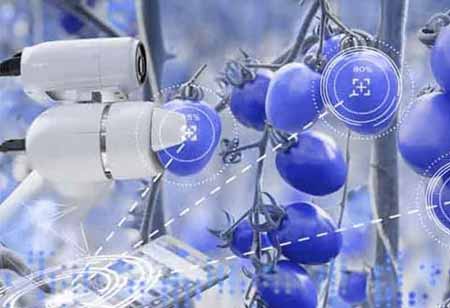Thank you for Subscribing to Agri Business Review Weekly Brief
The Role of Advanced Technologies in Aquaculture

By
Agri Business Review | Wednesday, May 04, 2022
Stay ahead of the industry with exclusive feature stories on the top companies, expert insights and the latest news delivered straight to your inbox. Subscribe today.
Today, aquafarms and other businesses are leveraging new technologies to enhance aquafarming.
FREMONT, CA: Aquaculture, alternatively referred to as aquafarming, is the fastest expanding food sector. This expansion is attributed to the increasing demand for protein and the ever-expanding human population. According to Allied Market Research, the five primary aquaculture markets are estimated to reach $87.6 billion by 2025, rising at a compound annual growth rate of 4.9 percent from 2018 to 2025.
Although aquaculture dates back to 4,000 BC, the sector is still relatively new and growing. It can learn significantly from livestock farming and faces several issues, including disease control, low-impact production, feeds, and nutrition. However, sophisticated technology has lent a hand of assistance. The advent of the Internet of Things (IoT) has created the profitable potential for aquatic species to increase efficiency and maintain health. Along with the Internet of Things, some significant breakthroughs are poised to upset the aquaculture business.
Remotely operated vehicles (ROVs)
The development of ROVs is extremely beneficial since they provide a view below the water's surface and enable remote monitoring of fish farms without requiring humans. Additionally, ROVs can be used to execute a range of jobs that would otherwise need specialized personnel and costly protective underwater gear. Farmers can inspect nets quickly and without leaving their desks with the assistance of ROVs. Capturing a 270-degree video for top-to-bottom net inspection takes around 30 minutes. Additionally, side-facing cameras facilitate lateral inspections.
Robotic cages for fish farming
Parasites and illnesses are the primary concerns of fish growers. Both of these issues arise due to the overcrowded nature of fish farms. As a result, yields are reduced, and maintenance and manufacturing expenses are increased. On the other hand, fish farming in autonomous roaming robotic cages dubbed aquapods may be the aquaculture industry's next big thing.
While such robotic cages need a hefty initial investment, the technology saves money. Aquapods produce fish in the open sea, and robots can inspect and, if necessary, repair nets, making fish farming and operation management safer and more efficient. Additionally, Rolls Royce has joined the aquaculture business and indicated that cargo ships could be more efficient and environmentally friendly in shipping.
Drones to take a dive
Drones, like robots, can be utilized to do human tasks. Monitoring offshore fish farms require specialized work and pose particular human health risks. On the other hand, drones can take the place of costly human involvement and can dive below many times to examine nets and monitor the health of fish farms.
Numerous firms have joined the market to analyze fish farms using sensor technology. Additionally, drones can provide farmers with live video streaming, allowing them to monitor the health of aquatic species without risking their lives. While drones offer the essential data, technology such as extensive data analysis can assist farmers in identifying patterns and notifying them of maintenance issues. Fish stock and environmental studies can assist in identifying risks before they cause damage to an entire farm.





